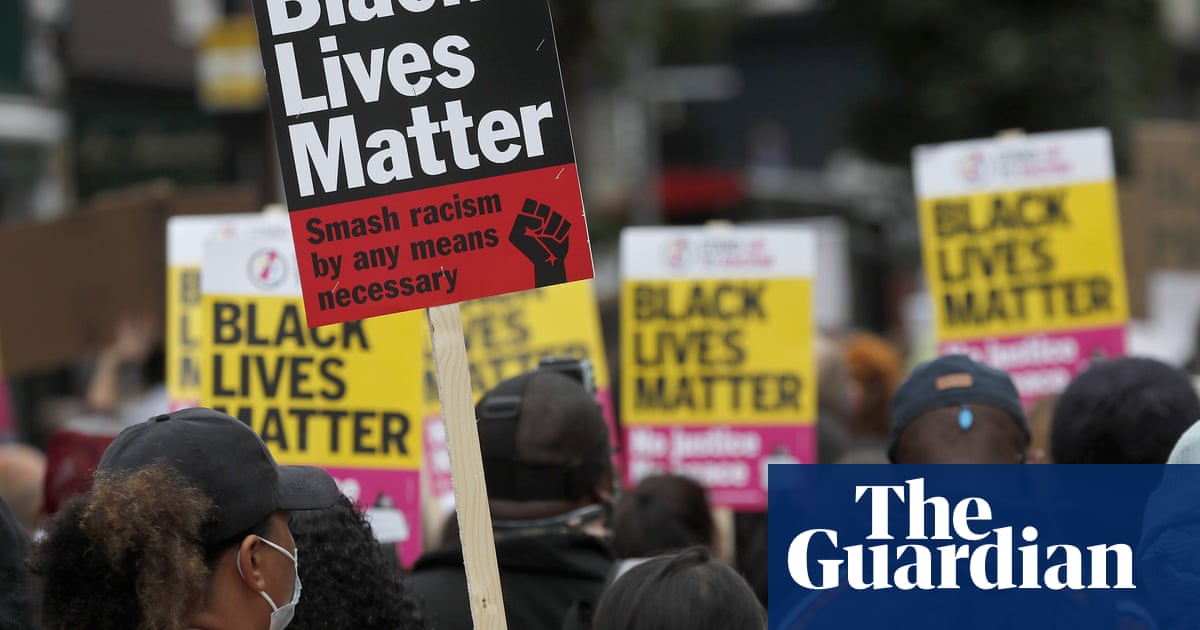
British arts institutions deployed “kneejerk” and “stopgap” responses in the aftermath of the Black Lives Matter movement as they attempted to avoid criticism for the lack of diversity in their collections, according to the artist Gavin Jantjes.
The South Africa-born artist, who was a key figure during the British black art movement of the 1980s, told the Guardian that under-pressure organisations approached him to buy work that they had ignored since it was made decades earlier.
He said: “Institutions would come to me and say: ‘Do you have a work from the 1970s that we can buy?’ When I was making those works in the 1970s, nobody wanted to look at them, and the things I’m making now nobody wants to look at. It’s like the rinse cycle of a washing machine, it doesn’t change.”
During the Black Lives Matter movement, most of the UK’s prominent arts institutions – including Tate, the Barbican and the Southbank Centre – released statements pledging to, among other things, address racial bias and diversify senior leadership teams.
Some released bullet-pointed plans, and since 2020 there has been a dramatic uptick in the number of exhibitions featuring black artists in major British institutions.
But Jantjes, 75, believes the surge was powered by leadership teams that were looking to paper over cracks rather than engage meaningfully with the work and its creators.
“It’s a kneejerk reaction, it’s a stopgap,” Jantjes added. “That to me proves institutions still do not want to bother investigating what artists are doing today rather than talking about their ethnicity, sexuality or post-colonial engagement or whatever.”
Jantjes, who is having a career retrospective at the Whitechapel Gallery this summer, came to prominence in the UK when he had an exhibition in 1976 at the ICA, becoming one of the first black artists to ever hold a show there.
His work in that period was mostly collage, mixing newspaper reports, magazine images and text that largely focused on the apartheid regime in South Africa, which had been condemned for killing hundreds of schoolchildren during the Soweto Uprisings that happened shortly after Jantjes show at the ICA opened.
Jantjes was also barred from returning to the country because his work was critical of the regime.
Jantjes was first exposed to art as a three-year-old at a community art school near Cape Town, where he lived until moving to Hamburg to go to university.
While in Germany, he was taught by Joseph Beuys. The German artist would critique students’ work and asked Jantjes if he had an “inferiority complex” when he showed his work A South African Colouring Book – a series of collages with text that explained the way the apartheid regime worked.
Jantjes said: “He recognised immediately that I was not being myself. He said: ‘You are reacting to something.’ I didn’t pick it up at the time, I was oblivious to it.”
While in exile, Jantjes became one of the first black art lecturers in the UK, working at what is now known as the University of the Arts London. He then worked at the Arts Council before stopping his practice and moving to Norway, where he was the artistic director of the Henie Onstad Art Center.
The retrospective To Be Free! will span the early collage works, later figurative paintings and his most recent abstract paintings, which he started to work on once he returned to Britain from Norway.
Jantjes said that when he first came to London in the 1970s, it was almost impossible to find an exhibition of work by anyone who was not white, but that things have now opened up to the point where there are dozens of shows just this year.
He thinks there is an attempt to “correct the record” because many black artists from the 70s and 80s were ignored.
“It’s blatantly obvious that they were myopic and overlooked things deliberately. These works were good, they were at the time, which is why they’re still being collected now.”
To Be Free! opens on 12 June and runs to 1 September 2024 at Whitechapel Gallery.












